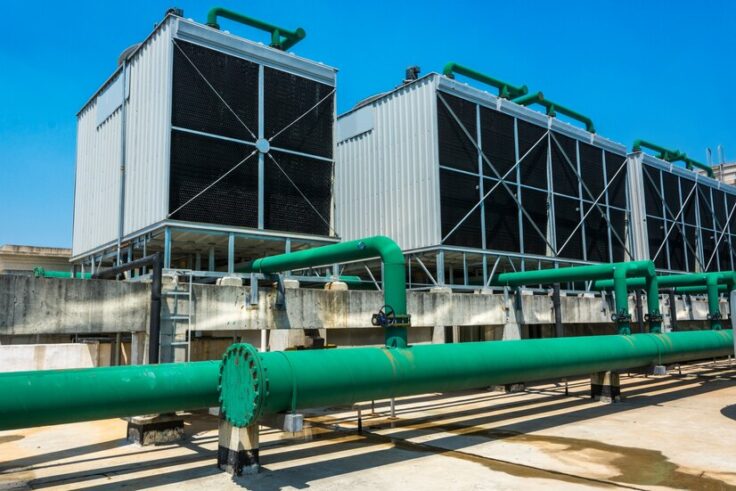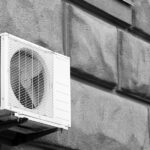
Understanding Geothermal Heating and Cooling Benefits
Geothermal heating and cooling systems harness the Earth’s natural energy to provide efficient temperature regulation for homes and buildings. By tapping into the stable underground temperatures, these systems offer a sustainable and cost-effective alternative to traditional HVAC systems. Not only do they reduce energy consumption and greenhouse gas emissions, but they also provide consistent comfort year-round. Discover how geothermal heating and cooling can revolutionize your approach to home energy management, offering both environmental and financial benefits.
How Geothermal Systems Work
Geothermal systems work by utilizing the consistent temperatures found beneath the Earth’s surface. These systems include a ground loop, a heat pump, and a distribution system. The ground loop, made of pipes buried underground, circulates a fluid that absorbs heat from the Earth during the winter and releases heat back into the ground during the summer. This process allows for efficient heat exchange with the stable underground temperatures.
The heat pump then transfers this heat to the distribution system, which distributes warm or cool air throughout the building. During winter, the heat pump extracts heat from the ground loop to warm the building, while in summer, it removes heat from the building and transfers it back into the Earth, providing effective cooling.
Environmental Benefits of Geothermal Heating and Cooling
Geothermal heating and cooling systems offer significant environmental benefits by leveraging the Earth’s natural energy. Here are key advantages:
- Reduction in Greenhouse Gas Emissions: Geothermal systems produce minimal greenhouse gases compared to conventional HVAC systems, as they rely on renewable energy from the Earth. This leads to a decrease in your carbon footprint and contributes to the fight against climate change.
- Decreased Energy Consumption: By using the Earth’s stable temperatures, geothermal systems are highly energy-efficient. This reduced energy consumption translates to lower reliance on fossil fuels and a decrease in overall environmental impact.
- Sustainable Energy Source: Geothermal energy is a renewable resource that is virtually inexhaustible. Unlike fossil fuels, geothermal energy doesn’t deplete natural resources, making it a sustainable choice for long-term environmental health.
- Lower Air Pollution: With fewer emissions and reduced reliance on combustion processes, geothermal systems help lower air pollution. This leads to improved air quality and a healthier environment for both people and wildlife.
Energy Efficiency and Cost Savings
Geothermal heating and cooling systems are renowned for their exceptional energy efficiency. By using the Earth’s stable temperatures, these systems require significantly less energy to heat and cool a building compared to traditional HVAC systems. This efficiency translates to lower utility bills, as geothermal systems use approximately 25-50% less energy, reducing overall operational costs.
In addition to immediate savings on energy bills, geothermal systems offer long-term financial benefits. Their durability and low maintenance requirements mean fewer repairs and longer lifespans, further contributing to cost savings. Over time, the reduced energy consumption and maintenance expenses can offset the initial installation costs, leading to substantial savings and a solid return on investment.
Year-Round Comfort with Geothermal Systems
Geothermal systems provide consistent comfort throughout the year by leveraging the Earth’s stable temperatures. During winter, these systems extract heat from the ground and efficiently distribute it throughout the building, ensuring a steady and comfortable indoor temperature. This process is not only effective but also minimizes fluctuations in heating performance.
In the summer, geothermal systems reverse the process by removing excess heat from the building and transferring it back into the ground. This cooling method maintains a pleasant indoor climate even during the hottest months. By balancing heating and cooling needs effectively, geothermal systems offer reliable, year-round comfort while maintaining energy efficiency.
Installation Process of Geothermal Heating and Cooling
The installation of geothermal heating and cooling systems involves several key steps to ensure optimal performance and efficiency. Here are essential stages in the installation process:
- Site Assessment: A professional evaluates the site to determine the best location for the ground loop and assess soil and geological conditions. This assessment helps in designing a system that maximizes efficiency and performance.
- Design and Planning: Based on the site assessment, a detailed system design is created, including the layout of the ground loop, heat pump specifications, and the distribution system. This plan ensures that the geothermal system meets the specific needs of the building.
- Ground Loop Installation: The ground loop is installed either horizontally or vertically, depending on the available space and soil conditions. This involves burying pipes in the ground to circulate the fluid that absorbs or dissipates heat.
- Heat Pump Installation: The heat pump is then installed inside the building, connected to the ground loop. It is responsible for transferring heat between the ground loop and the building’s distribution system, ensuring effective heating and cooling.
- System Testing and Calibration: Once installation is complete, the system is thoroughly tested and calibrated to ensure it operates efficiently. This step includes checking for leaks, verifying connections, and adjusting settings for optimal performance.
Maintenance Requirements for Geothermal Systems
Geothermal systems are known for their durability and low maintenance needs, but regular upkeep is essential to ensure optimal performance. Here are key maintenance requirements:
Routine Inspection of the Heat Pump
Periodically, the heat pump should be inspected to check for any signs of wear or potential issues. This includes examining filters, checking refrigerant levels, and ensuring that all components are functioning correctly.
Cleaning and Replacing Filters
The system’s air filters should be cleaned or replaced every few months. Clean filters ensure efficient airflow and prevent dust and debris from accumulating in the system, which can affect its performance.
Checking the Ground Loop
Although ground loops are generally low maintenance, it’s important to inspect them occasionally for leaks or damage. Ensuring that the loop is functioning properly helps maintain system efficiency.
Maintaining the Distribution System
Regular checks on the distribution system, including ducts and air handlers, help identify and address any issues that could impact comfort and efficiency. Proper insulation and sealing of ducts can improve performance.
Professional Annual Maintenance
Scheduling a professional annual maintenance service ensures that all system components are thoroughly inspected and serviced. This includes checking the heat pump, ground loop, and other critical parts to prevent any potential issues and keep the system running smoothly.
Geothermal Heating and Cooling for Residential Use
Geothermal heating and cooling systems offer numerous benefits for residential use, making them an attractive choice for homeowners seeking efficiency and comfort. By harnessing the Earth’s stable temperatures, these systems provide reliable heating and cooling year-round, reducing the need for traditional energy sources. This consistent performance helps maintain a comfortable indoor climate while minimizing energy bills.
Additionally, geothermal systems are known for their longevity and low maintenance requirements. Once installed, they can operate efficiently for decades with minimal upkeep. The reduction in energy consumption not only leads to lower utility costs but also contributes to a smaller environmental footprint, making geothermal heating and cooling an eco-friendly option for homeowners looking to enhance both comfort and sustainability in their residences.
Commercial Applications of Geothermal Systems
Businesses and commercial properties can greatly benefit from geothermal heating and cooling systems. These systems offer significant energy savings and operational efficiency, making them an ideal choice for large-scale applications. By utilizing the Earth’s natural energy, commercial buildings experience reduced heating and cooling costs, which can lead to substantial long-term savings.
In addition to financial benefits, geothermal systems contribute to a greener environment by lowering greenhouse gas emissions. Their reliability and durability make them suitable for various commercial settings, including office buildings, retail spaces, and industrial facilities. By investing in geothermal technology, businesses can enhance their sustainability efforts while enjoying consistent indoor comfort and lower energy expenditures.
Financial Incentives and Rebates
Numerous financial incentives and rebates are available for those installing geothermal heating and cooling systems, making the initial investment more affordable. Many federal and state programs offer tax credits and rebates for geothermal system installations, which can significantly reduce out-of-pocket expenses. These incentives are designed to promote the adoption of renewable energy technologies and support homeowners and businesses in making eco-friendly choices.
Additionally, local utility companies may provide further rebates or incentives to encourage energy-efficient upgrades. These financial benefits, combined with the long-term savings on energy bills, can make geothermal systems a financially attractive option. By taking advantage of available incentives, you can offset the installation costs and enhance the overall return on investment for your geothermal heating and cooling system.
Future of Geothermal Heating and Cooling
The future of geothermal heating and cooling looks promising as advancements in technology and increasing environmental awareness drive its adoption. Ongoing research aims to enhance the efficiency and cost-effectiveness of geothermal systems, making them more accessible to a wider audience. Innovations in drilling techniques, heat pump designs, and ground loop installations are expected to reduce installation costs and improve system performance.
Moreover, as more regions adopt stringent environmental regulations and seek sustainable energy solutions, geothermal systems are poised to play a key role in meeting these goals. With growing support from government incentives and a rising focus on reducing carbon footprints, geothermal heating and cooling is set to become an increasingly integral part of the global energy landscape, offering long-term benefits for both the environment and users.
Geothermal heating and cooling systems offer remarkable benefits, including energy efficiency, cost savings, and environmental sustainability. By harnessing the Earth’s natural energy, these systems provide consistent comfort throughout the year while reducing your carbon footprint.
If you’re considering a switch to geothermal technology or need more information on how it can benefit your home or business, Cool Factory, Inc is here to help. Contact us today at (703) 713-5113 to explore your options and take the first step towards a more efficient and eco-friendly heating and cooling solution. Located in Sterling, VA, we are ready to assist with all your geothermal needs.






